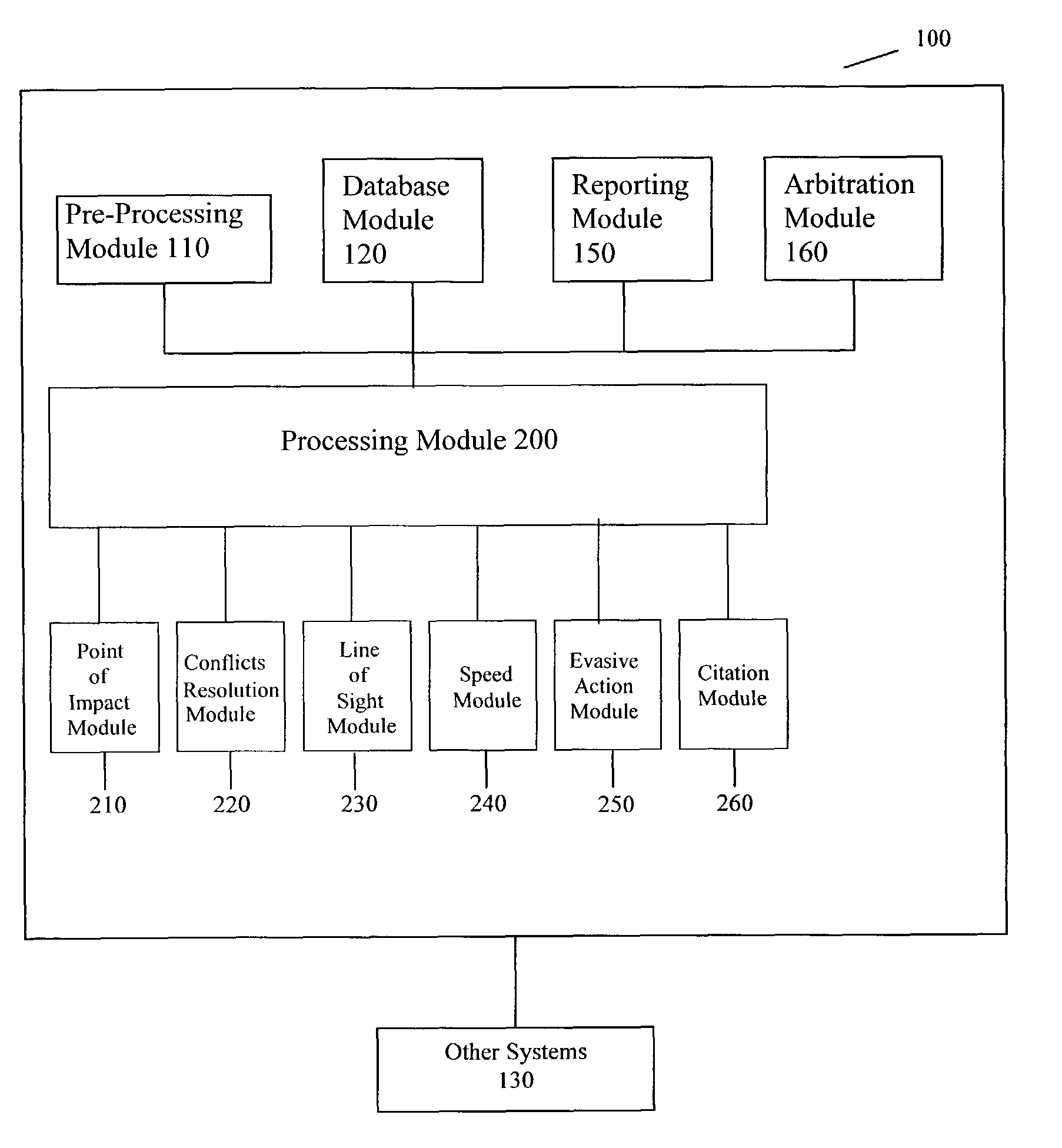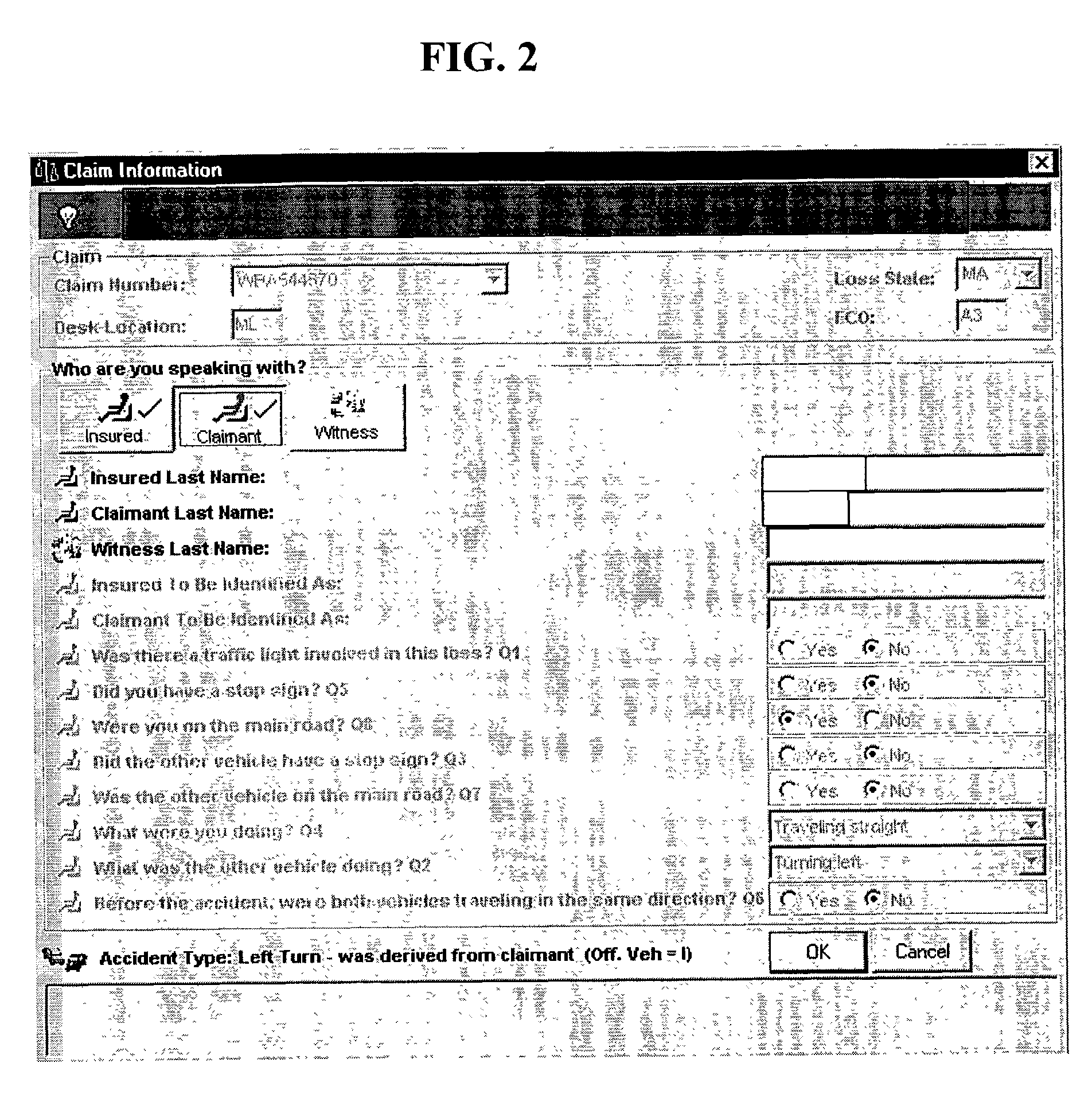System and method for identifying and assessing comparative negligence in insurance claims
a comparative negligence and insurance claim technology, applied in the field of automobile accident liability investigation and assessment, can solve the problems of increasing the number and dollar value of automobile accident losses of insureds, increasing the risk, and unable to recover anything, and achieving the effect of slow and complex insurance claim processing
- Summary
- Abstract
- Description
- Claims
- Application Information
AI Technical Summary
Benefits of technology
Problems solved by technology
Method used
Image
Examples
example 1
Descriptions of Loss
Insured's Description of Loss
[0211]Occurred at night in an area that was not well-lit.[0212]Sleet / freezing rain made the visibility poor, but the insured did not have his wipers on. The insured did not know if the other vehicle's wipers were on.[0213]Both drivers had their headlights on.[0214]The road surface was icy, making for poor traction for both vehicles.[0215]The insured was not familiar with the area.[0216]The speed limit was 30 mph.[0217]The insured was traveling on a road that had one lane going each direction; the claimant was traveling on the intersecting street also with one lane in each direction.[0218]The claimant approached the intersection from the insured's left, on the main road.[0219]Both vehicles were traveling in the proper lanes.[0220]The insured's view of the other vehicle was obstructed by a snowbank.[0221]Neither of the vehicles had a stop sign or flashing caution lights.[0222]The insured stopped at the intersection, then pulled out to c...
example 2
Initial Questions for Determining Accident Type
[0253](1) Was there a traffic light involved in this loss? (1a) yes (1b) no[0254](2) What were you doing? (2a) turning left (2b) turning right (2c) travelling straight (2d) merging (2e) backing up (2f) other[0255](3) If the answer to question (1) was (1b), did you have a stop sign? (3a) yes (3b) no[0256](4) What was the other vehicle doing? (4a) turning left (4b) turning right (4c) travelling straight (4d) merging (4e) backing up (4f) other[0257](5) If the answer to question (1) was (1b), did the other vehicle have a stop sign? (5a) yes (5b) no[0258](6) Before accident, were both vehicles travelling in same direction? (6a) yes (6b) no[0259](7) If the answer to question (3) was (3b), was your vehicle on the main road? (7a) yes (7b) no[0260](8) If the answer to question (5) was (5b), was the other vehicle on the main road? (8a) yes (8b) no
example 3
Summary of Preliminary Response Used to Determine Accident Type
[0261]
QuestionInsuredClaimant1bb2cc3bb4cc5bb6bb7bb8ab
PUM
 Login to View More
Login to View More Abstract
Description
Claims
Application Information
 Login to View More
Login to View More - R&D
- Intellectual Property
- Life Sciences
- Materials
- Tech Scout
- Unparalleled Data Quality
- Higher Quality Content
- 60% Fewer Hallucinations
Browse by: Latest US Patents, China's latest patents, Technical Efficacy Thesaurus, Application Domain, Technology Topic, Popular Technical Reports.
© 2025 PatSnap. All rights reserved.Legal|Privacy policy|Modern Slavery Act Transparency Statement|Sitemap|About US| Contact US: help@patsnap.com



